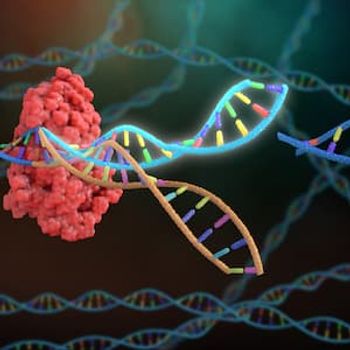
Parkinson Gene Therapy Targets Growth Factors
Scientists are testing alternative therapeutic approaches that may delay disease progression and even protect and regenerate neurons.
Parkinson disease (PD) treatments most often target dopamine, a neurotransmitter that decreases because of the death of substantia nigra neurons. Now scientists are testing alternative approaches-gene therapy directed at increasing the growth factors neurturin (NRTN) and glial cell-derived neurotrophic factor (GDNF)-with the goal of protecting substantia nigra neurons from dying.
Therapies have not been successful yet. But many researchers think that, based on the known effects of these molecules, neurotrophic factors hold particular promise for not only delaying PD progression but possibly even protecting and regenerating neurons.
“Inherently it seems like the neurotrophic strategy may be better [than targeting dopamine deficits]…but so far they’re not showing benefits,” said geneticist Xandra Breakefield, PhD, a professor of neurology at Harvard Medical School in Boston.
For example, Ceregene’s CERE-120, a viral vector used to deliver the NRTN gene into the substantia nigra and the striatum, did not achieve clinical goals in two Phase 2 trials. However, although there were no measured benefits at the designated 12-month end point, some improvements in PD symptoms occurred later, at 15 to 18 months after the surgery.1
Further development of the treatment is unclear. “All of the rights to Ceregene’s technology and programs were acquired by Sangamo in 2013,” according to Raymond Bartus, PhD, a former investigator on several neurological gene therapy trials. “Because they have publicly disclosed little information, it is not possible to discuss their intention for continued development of CERE-120.”
In another neurotrophic factor approach, at the University of California, San Francisco, neurosurgeon Krystof Bankiewicz, MD, PhD, along with John Heiss, MD, of the National Institute for Neurological Disorders and Stroke, currently are treating 24 patients with PD in a Phase 1 study examining a viral vector containing the gene for GDNF.
Dr Bankiewicz and colleagues are using MRI guidance, or “interventional MRI,” to deliver the drug. According to Dr Bankiewicz, with use of this technique there are “so far no safety issues…we know that the drug is getting to the right place. We need to wait for the clinical data.” It only remains to be seen whether clinical efficacy is in fact improved with the additional use of MRI.
Michael Hutchinson, MD, a neurologist at Mount Sinai Hospital in New York City, is convinced that GDNF in particular has a bright future as a treatment for PD, not only to delay neural deterioration but also to protect neurons. He thinks that “GDNF is a very interesting molecule, we really think it works like gangbusters.”
Dr Hutchinson’s optimism is based largely on GDNF infusion studies. GDNF infusion into the putamen has improved movement and shown evidence of neuron regeneration in humans.2 Success for GDNF gene therapy may require the patience of researchers to optimize dosing and delivery, which may now indeed be achieved through the use of MRI.
Susan Gurney, PhD, a scientist working in the Columbia University Department of Epidemiology in New York City who worked on trials involving direct infusion of GDNF, thinks that gene therapy could be a better approach than simply infusing growth factors into the brain. She stated, “The genetic vector methods allow for a one-time surgery, with almost no risk of infection.”
Gene therapy trials targeting growth factors continue. Whether the approach will succeed and these treatments make it to clinical use remains to be seen.
Timing may be essential to PD gene therapy success, according to Francesco Roselli, MD, PhD, a physician and neurobiologist at the Friedrich Miescher Institute for Biomedical Research, Basel, Switzerland. “Early correction may block the progression of the disease and allow long-term treatment by pharmacology alone,” he said.
Take-aways:
• Gene therapy for PD involves increasing the growth factor NRTN or GDNF.
• Growth factor gene therapies have so far not been successful, possibly because of problems with dosing.
• MRI may improve gene therapy dosing, but more data are needed.
References:
1. Bartus RT, Baumann TL, Siffert J, et al. Safety/feasibility of targeting the substantia nigra with AAV2-neuturin in Parkinson patients. Neurology. 2013;80:1698-1701.
2. Patel NK, Pavese N, Javed S, et al. Benefits of putaminal GDNF infusion in Parkinson disease are maintained after GDNF cessation. Neurology. 2013;81:1176-1178.
Newsletter
Stay at the forefront of cutting-edge science with CGT—your direct line to expert insights, breakthrough data, and real-time coverage of the latest advancements in cell and gene therapy.










































